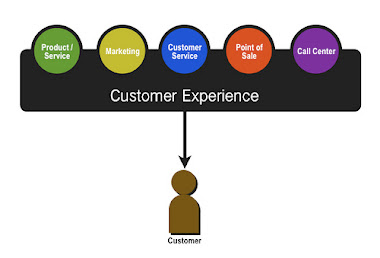Customer Experience is a term that, like its predecessor ‘Customer Relationship Management (CRM)’, is being sufficiently discussed, debated and talked about. Here I would attempt to summarise the vast literature around it in meaningful way, which even a layman can understand while making the best of efforts to ensure sufficient academic stimulation for the well-informed of the field.
1. Customer Touch points
First, let’s look at what is a customer touch-point. A customer touch-point is defined as a point of interaction between the customer and the business that is selling the product/service which the customer requires. This customer-business interaction may happen over any of the channels of communication
2. Customer Experience Channels
There are multiple channels to facilitate interaction between a customer and a business. These could be classified as direct channels (like the call centre) or indirect (like TV advertising). Based on the use of technology, these channels could also be classified asDigital Channels (like Website, mobile phone) and Physical Channels (like retail store). There may also be social channels of customer experience. These are indirect channels typically where a potential customer hears about a product/service experience of a business from his/her friend. These are typically social channels, traditionally limited to word-of-mouth marketing (WOMM) but more recently including new age Digital channels like Facebook, Twitter, etc.
3. Customer Lifecycle & Stages
Customer Lifecycle is the sum-total of all the stages that a customer goes through during his/her interaction with a business from awareness, discovery, attraction, interaction, purchase, use, cultivation to advocacy/termination. Customer Lifecycle
Customer Lifecycle
4. Customer Journey
Each stage of the customer lifecycle above has a customer objective and the customer goes through a series of steps to achieve his/her objective. This is known as a customer journey. And Customer Journey Mapping has its promoters and detractors and the benefits have to be weighed in by the business before undertaking it.
5. Customer Experience Definition
With those basic components defined, I believe we are at a point where we can define Customer Experience. Customer Experience is a cumulative total of what a customer feels (experiences) across all touch-points, across all stages of the customer lifecycle, across all customer experience channels.
6. Customer Experience Classification
Several sub-sets of customer experience have been attempted. From online experience to User Experience to Digital Customer Experience, there are many attempts to classify/slice-and-dice customer experience subsets. But most are in its infancy and industry specific.
7. Differentiation from Customer Relationship and other previous concepts
Customer Relationship Management (CRM), Word-of-mouth-marketing (WOMM), Customer Service, Voice of Customer (VOC) initiatives and Net Promoter Score (NPS) are all concepts related to customer experience. Each of them deserves its own discussion but broadly speaking they all represent a segment/subset of customer experience but not customer experience in its entirety. E.g. WOMM & NPS mainly reflect the outcome of customer experience but do not measure its enablers. CX, CRM & Loyalty Management
CX, CRM & Loyalty Management
8. Challenges of Customer Experience (CX)
Lastly I want to briefly touch upon the current challenges of customer experience. So assuming you comprehend CX, its value to your business but the obvious next question is how? The primary obstacles in enforcing a proper CX strategy in an organisation are as follows, in my opinion:
a. Tools for Customer Experience – There are very few IT tools available for CX namely along the following objectives:
i. Customer Experience Innovation – How do I use technology to innovate CX of my business? Are there existing tools that I can implement and let them suggest innovative solutions to my CX challenges?
ii. Customer Experience Delivery – If I have a CX strategy in place, what IT tools should I procure to implement them in my existing IT ecosystem?
b. Customer Experience Monetization – What CX strategy should I implement so that I get the maximum bang for my buck? I have attempted to address the challenge of “Customer Experience Monetization” for hotels industry in one of my earlier posts.
c. Customer Experience Measurement – How do I as a business quantify “experience” and then measure it? Should I measure it using financial metrics like revenue or service metrics like FCR (First Call Resolution) or survey based metrics like CSAT (Customer Satisfaction) or social metrics like NPS.
I hope the definitions and the challenges articulated would serve to give a foundation to those looking to learn about “What exactly is customer experience?” For experts in the field, I welcome them to contribute about what are the other major challenges that I might have missed out as well as proposing their solutions to the challenges I have elaborated above. I look forward to learning from my peers and seniors in the field…

No comments:
Post a Comment